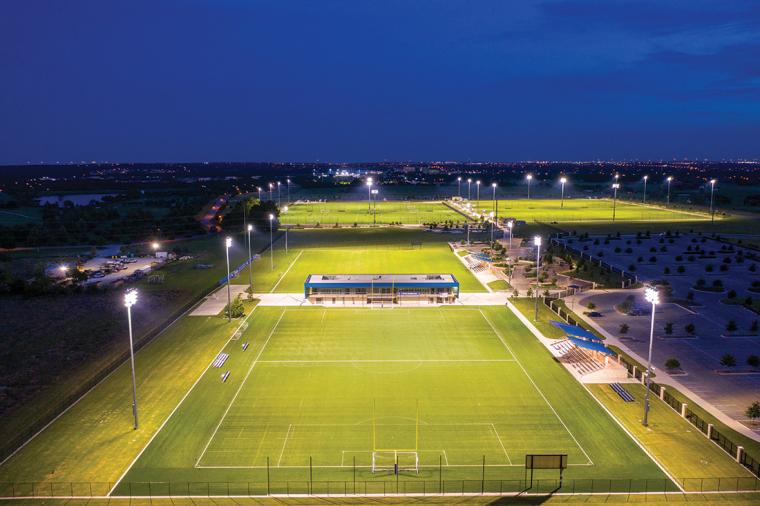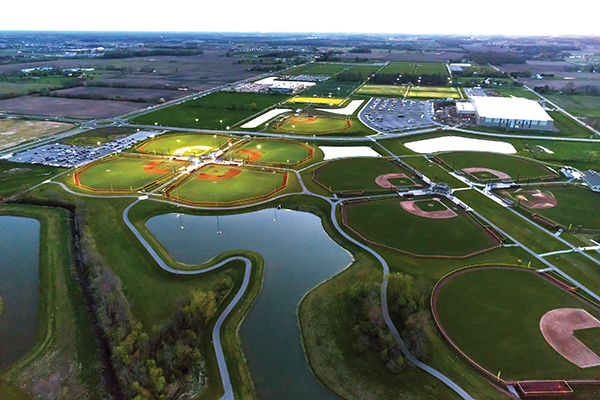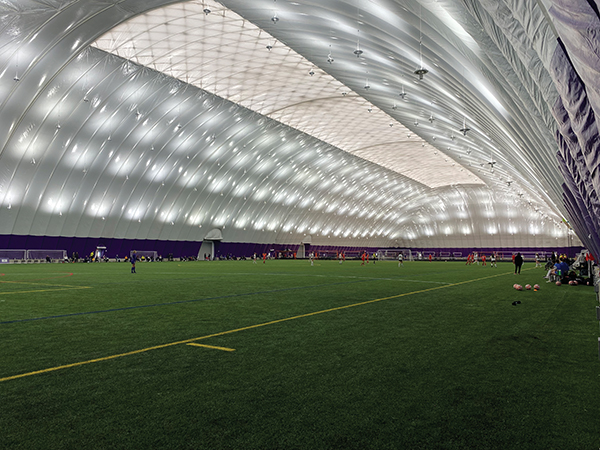
Sports tourism has been on an accelerated boom over the past ten years, with large indoor and outdoor youth sports complexes driving much of the growth.
According to UN Tourism, sports tourism overall is one of the fastest growing sectors in tourism and the most resilient. During the COVID-19 pandemic, sports tournaments were a bright spot in an otherwise bleak travel economy. In fact, many communities that did not have compelling sports complexes and suffered during the pandemic are now redoubling their efforts to invest in facilities and join the rising tide of travel sports ecosystems.
Communities, destination management organizations (DMOs) and sports commissions realize that investing in youth and amateur sports complexes creates an economic engine for sports tourism. However, simply building the facility is not enough if the spending goes to neighboring communities.
Families with children in travel leagues spend money and time in hotels, restaurants, and local businesses, and a youth or amateur tournament can bring in hundreds of travel teams from around the nation to a community with sports facilities. Having the amenities and support ecosystem to capture those benefits is just as critical as having the sports complex. Why spend up to $100 million, often using public funding sources, if the city or county cannot recapture the spending and taxes within their jurisdiction?
Field of Dreams

The tourism development opportunities are clear, but an “if you build it, they will come” approach won’t yield economic rewards. The question becomes, how do you develop a youth sports complex and ensure that the benefits circle back into the community? The answer: Build a destination around the complex. Even better, make as much of it as walkable as possible and appealing to families.
The most forward-thinking cities and counties are saying “How do we create an entire ecosystem around a youth sports complex?” Communities like Overland Park, Kansas are developing such destination districts. Its BluHawk development includes shopping, dining, hotels and even offices and housing within walking distance of a massive indoor sports facility.
Westfield, Indiana, which is home to Grand Park, the busiest youth sports complex in the U.S. with more than six million annual visits, initially intended to have a walkable mixed-use district surrounding it, including hotels. However, over the past 10 years, most of the benefits overflowed to the hotels and restaurants in neighboring cities, as adjacent development was slow to occur or included standard, national chain casual and fast food joints.
A new mayor and council, as well as enterprising developers who have been patiently waiting for the right conditions, are now embarking on an incredible array of planned, walkable, mixed-use development plans surrounding the complex. The Grand Park and districts surrounding it will not only generate sports tourism (and capture the benefits), but the mixed-use districts will also attract visitors, locals and spending in their own right.
It’s the same concept that professional minor and major league sports teams are using around their arenas and stadiums. These districts encourage play-and-stay activity for hours or sometimes days before and after an event, not only attracting visitors and tourists in the first place, but also increasing the economic benefits from longer stays and additional activities. The districts also help pay for the major sports venue.
Beyond the Big Game
Building an ecosystem with a youth sports anchor creates net-new tax income for the community. The area can then leverage that revenue to actually fund the venue itself, and also fund ongoing improvements and support. In many states, what is termed “super TIF” districts are allowed to recapture all manner of taxes on the spending in a district, such as income, property, hotel, restaurant and ticket taxes.
A tax recapture ecosystem often solves the challenges that sports complexes have faced in the past, such as outlaying large investments that don’t generate returns, or building developments that lay idle during off-peak seasons and don’t have multi-use components.
Even though youth sports operate at a smaller scale than professional sports, the central concept of placemaking is the same. The best multi-use districts and sports-anchored entertainment centers attract people to the area to live, work, play and visit. There are year-round activities and a wide range of locally owned businesses that exude local authenticity and keep people coming back beyond a single sporting event.
Communities that build a center in isolation without a sense of the broader environment pay the price in lost opportunities. It’s in the community’s best interest to understand what a visitor will need and want during their stay and build a commercial network that satisfies those needs and wants.
To make an economic opportunity crystal clear, geo-based cell-phone data can show where people go before and after an event at a facility, demonstrating direct impacts. When representatives from cities and municipalities see the distance that people travel, the hotels they stay in and the money spent in neighboring communities vs. their own, they are often shocked. They realize that a community that did all of the heavy lifting to fund and develop a sports complex is now passing the benefits of that hard work to another neighborhood. In simplest terms, their city did the work, and another city gets to enjoy the rewards.
Placemaking For the Win

Once a community recognizes the opportunity and understands the benefits of a youth-sports-based ecosystem, the next step is planning. A destination needs to be carefully thought out, comprehensively planned and use best practices from successful venues around the country.
Building a center first and then figuring out later how to layer on a tourism aspect is much less effective. A holistic plan from the get-go will enable a community to truly leverage their investment and provide athletes and visitors with positive, memorable experiences.
An honest assessment is an important part of an action plan. Is a community starting from scratch, or building out a district around an active center? How does it rate in terms of sports, arts, recreation, shopping, dining, lodging, entertainment and so on? What’s the competitive landscape? A community needs to take a hard and impartial look at its strengths, weaknesses and gaps in the market, and then take a deeper look at the viability of filling those gaps.
Is it Feasible or Will it Fizzle?
This is where a feasibility and financing study comes into play. A vision of a thriving destination district is a wonderful starting point, but only a feasibility study can determine the market and financial realities, as well as the potential tax impacts to be recaptured.
If there are challenges to those realities, a destination real estate consulting firm can assess how those challenges can be overcome and manage the follow-on processes. At that point, a positive result from a feasibility study means a community can move into action and begin taking the idea from concept to reality.
Of course, reality entails development dollars and project complexities. Community stakeholders are not always going to have familiarity with navigating public-private partnerships, raising private capital, or advancing a large-scale project through its various stages.
Developments that look promising at face value can wither on the vine without the right management. On the other hand, developments that look tough and expensive at first can go from feasibility study to ribbon-cutting ceremony with the right guidance.
The sports tourism opportunity is vast and communities that grab hold of it with carefully planned and executed youth-sports ecosystems can reap the rewards for decades to come. Investing in sports complex destination districts supports the athletes and families involved, while also building economically thriving centers of activity and stronger communities. SDM

